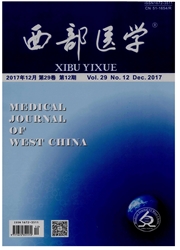

 中文摘要:
中文摘要:
目的 探讨急诊科发生感染的危险因素及预防对策。方法 采用统计学抽签的方法随机选择70例在医院急诊科治疗的患者,分为感染组32例和对照组38例。采用相应统计学方法分析性别、年龄、BMI、病情、住院时间、侵袭性操作、抗生素及激素的使用等因素与急诊科感染的相关性,并采用相应的预防对策为临床提供参考。结果 两组患者Pearson单因素分析显示BMI、病情、侵袭性操作、抗生素及激素的使用等因素与急诊科发生感染密切相关,两组相比具有统计学意义(P〈0.05)。采用Logistic回归分析亦显示影响急诊科高感染率的相关因素为病情危重、抗生素使用、侵袭性操作、激素使用等(P〈0.05)。结论 医院急诊科感染发生率高、危害性大,且引起其高发生率的因素亦多,因此应加强急诊科院内感染的监测,严格制定消毒隔离措施,提高对无菌操作的要求,合理使用抗生素等,严格控制感染,尽量减少院内感染发生率。
 英文摘要:
英文摘要:
Objective To investigate the risk factors and nursing countermeasures of nosocomial infection in emer- gency department. Methods 70 patients treated in the emergency department of our hospital were divided into infection group and non infected group. The risk factors of nosocomial infection in patients with infection were analyzed by statisti- cal analysis. Results Pearson single factor analysis showed that BMI(x2 = 11. 073, P〈0.05), disease(x2 = 36.99, P〈 0.05) ,invasive operation(x2 =8. 541 ,P〈0.05), antibiotics(x2 = 8. 081, P〈0.05) and hormone(x2 = 9. 220, P〈0.05) were associated with the occurrence of infection in the emergency department (P〈0. 05). Logistic regression analysis showed that factors associated with the infection rate of emergency Kegao severity,antibiotic use,invasive operation and hormone use (P〈0. 05). Conclusion In the emergency department, infection rate is high and dangerous. Many factors can cause high incidence rate. The monitor of nosocomial infection,strict disinfection and isolation measures,increase of aseptic operation,reasonable use of antibiotics and strictly control of the infection can reduce incidence of nosocomial in- fection in hospital.
 同期刊论文项目
同期刊论文项目
 同项目期刊论文
同项目期刊论文
 期刊信息
期刊信息
